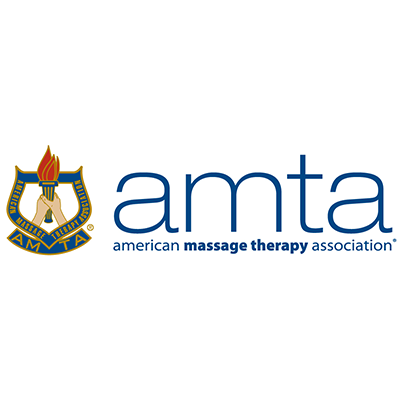HHS FY 2022 Labor Bill & Draft Report

On July 29, the House of Representatives approved the FY 2022 Labor, Health and Human Services, Education and Related Agencies (“Labor HHS”) funding bill with a vote of 219-208. The bill passed as part of a larger package of 7 of the annual 12 appropriations bills to fund the federal government for the fiscal year starting October 1.
The Labor HHS bill is one of the annual funding bills that Congress must pass each fiscal year in order to keep the federal government in operation. This bill provides the annual level of funding for public health and research entities including the NIH and CDC.
AMTA will continue to monitor and update the status of the FY 2022 Labor HHS Appropriations efforts in Congress. It is important to keep in mind that both the House and Senate must act and come to an agreement on the parameters of a final funding bill.
Labor HHS Draft Bill & Report (HRept 117-96)
Earlier in July, the Appropriations Labor HHS Subcommittee released its draft bill and the accompanying report (HRept 117-96) for the FY 2022 bill. The report serves as a summary of areas where Congress has strong interests and is encouraging a federal agency to take specific actions.
The bill (as approved by House Appropriations) contains significant funding increases over the FY 2021 amounts for most public health efforts, including over $600 million in combined funding for opioids, stimulants, and pain research. Many individual institutes have designated dollars that would be allocated for pain and opioid research.
AMTA’s Public Statement to the Appropriations Committee
AMTA submitted a written public statement to the Appropriations Committee in May supporting the inclusion of specific elements of the FY 2022 bill. We believe this will help advance education about massage therapy and the use of it to help address pain management issues.
We also continued our efforts to work with other national organizations in the pain/opioid abuse community to highlight specific needs for more massage therapy research, as well as additional federal actions needed to promote the use of massage therapy and other integrative therapies.
The House Report contains the following AMTA-supported initiatives:
- Directing the HHS to launch a public awareness campaign with the DoD and VA on evidence-based non-opioid treatment options that are included in the 2019 HHS Pain Management Task Force; the HHS Task Force specifically supports massage therapy in various sections throughout the report.
- The Committee also directs HHS to widely distribute the HHS Task Force report to health care providers in order to increase awareness on acute and chronic pain, and the availability of non-opioid pain approaches, including massage therapy.
- The report also advises the CDC to conduct extensive population data research on pain and the treatment options that exist, as well as the direct and indirect costs associated with pain.
Areas of Interest for Massage Therapists
HHS: Pain Management Initiatives
As recommended in the CARA-mandated HHS Pain Management Best Practices Inter-Agency Task Force report, the Committee urges the HHS to coordinate with the Department of Defense (DOD) and the VA to launch a public awareness campaign to educate Americans on the difference between acute and chronic pain and the available evidence-based non-opioid treatment options.
The Committee also encourages an update of relevant pain management policies and educational tools and has requested that the HHS widely distribute the report’s recommendations which include the importance of individualized, multidisciplinary, patient-centered care for the treatment of pain.
CDC: Opioid Abuse and Overdose Prevention
The Committee includes an increase of $187,790,000 earmarked for the CDC to fund opioid and stimulant abuse and overdose prevention in communities. In addition, the Committee directs the CDC to report on the results of these investments in local cities, counties, and communities to ensure that traditionally underrepresented populations receive equitable access to funds in the fiscal year 2023 Congressional Budget Justification.
The Committee also directs the CDC to publish population research data using questions from the National Health Interview Survey and other national population-based samples to describe those with chronic pain by patient age, comorbidities, the part of body affected, socio-economic status, geographic location by state, county and city, payor source, race, and gender.
Integrative and Complementary Health Care Research
The Committee supports the National Center for Complementary and Integrative Health (NCCIH)’s continued leadership of several trans-NIH and inter-agency initiatives, including the NIH–DoD–VA Pain Management Collaboratory (PMC) and the Health Care Systems Research Collaboratory, both of which are investigating best practices for implementing complementary health approaches in clinical health care settings. Consistent with goals that the NCCIH identified in its fiscal year 2021–2025 strategic plan, the Center is encouraged to maintain its focus on promoting research on multimodal approaches in treating pain and improving individual health.
The Committee includes an increase of $26,000,000 for the NCCIH to support research related to pain and pain management, as requested in the fiscal year 2022 budget.
National Institute of Neurological Disorders and Stroke (NINDS): Headache Disorders
Migraines are a leading cause of disability, affecting more than 17 percent of people in the U.S. The Committee encourages the National Institute of Health (NIH) to consider the HEAL Initiative’s support of fundamental, translational, clinical, and social science research on headache disorders to help provide lasting scientific solutions to the opioid crisis. Headache disorders research supported through the HEAL Initiative should supplement, not replace, current funding for headache disorders research at NIH, which has contributed to many of the effective non-opioid treatments for headaches.
AMTA will continue to monitor and update our members on the status of the FY 2022 Labor HHS Appropriations efforts in Congress. For more information on how massage therapists can get involved in supporting this legislation, you can visit our page on AMTA’s efforts to advance the conversation about massage for pain.
